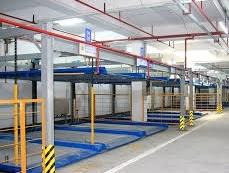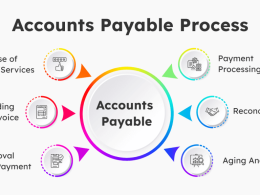When it comes to workplace safety and performance, the decisions made by top leaders can either make or break the well-being of employees. This is especially true when dealing with workplace hazards, where poor decision-making may lead to serious injuries, lost productivity, and even legal consequences. Therefore, it’s crucial that those in leadership roles put people first when setting performance goals — prioritizing safety alongside productivity.
In this article, we will explore why decision-making at the top must focus on people’s safety, particularly when managing hazardous environments. Understanding aspects such as NEBOSH course fees is crucial for executives who want to invest in proper training and align their goals to protect workers effectively. We’ll also provide a practical, step-by-step guide on how executives can build a safer workplace culture through informed decisions and ongoing safety education.
Why Putting People First Matters in Hazard Management
Imagine a factory floor where managers are pushing for higher output without considering how workers are affected. When performance goals ignore safety hazards, employees may feel pressured to take shortcuts, leading to accidents and injuries. In fact, studies show that workplaces with strong safety leadership have up to 40% fewer injuries compared to those where safety is treated as secondary.
A good example is Sarah, a plant manager at a manufacturing unit. Early in her role, she noticed a rising number of back injuries caused by manual handling of heavy materials. Instead of only focusing on meeting production quotas, she prioritized employee well-being by investing in training and better equipment. Over the next year, injuries dropped significantly, while productivity remained strong.
This story highlights a key truth: leaders who put people first can achieve better results overall.
The Connection Between Leadership Decisions and Workplace Hazards
Workplace hazards such as slips, trips, falls, exposure to chemicals, and manual handling injuries are often preventable. However, preventing them requires top-down commitment and clear performance goals that include safety metrics.
Many organizations make the mistake of setting goals based purely on output or cost reduction. When that happens, safety often takes a back seat, increasing the risk of injury. On the other hand, organizations that include safety targets in their performance goals empower their teams to work smarter and safer.
Step-by-Step Guide to Putting People First in Performance Goals
Step 1: Understand the Hazards
Before setting goals, leaders need to have a clear understanding of the specific workplace hazards their teams face. This involves:
- Conducting thorough risk assessments
- Listening to employee feedback
- Reviewing past incident reports
For instance, if manual handling is a known hazard, leaders should identify where and how these tasks lead to injury risks.
Step 2: Incorporate Safety Into Performance Metrics
Once hazards are identified, the next step is to make safety a measurable goal. Instead of only tracking productivity numbers, leaders should:
- Set targets for reducing injury rates
- Include employee safety training participation as a performance indicator
- Reward teams that maintain safe work practices
By embedding safety into performance goals, the organization signals that worker health is just as important as hitting production numbers.
Step 3: Invest in Employee Training and Support
No matter how strong leadership’s commitment, success depends on employees understanding and practicing safety. Leaders should invest in comprehensive training programs such as the Safety Officer Course in Pakistan, which equips workers with knowledge on hazard identification and prevention.
A well-trained workforce is more confident and less likely to take dangerous shortcuts.
Step 4: Provide the Right Tools and Equipment
In many cases, workplace hazards arise because workers lack proper equipment. Leaders should ensure access to:
- Ergonomic lifting aids
- Personal protective equipment (PPE)
- Safe workstations designed to reduce strain and injury
These investments may seem costly but save money in the long run by reducing lost workdays and compensation claims.
Step 5: Monitor, Review, and Adapt
Putting people first is an ongoing effort. Leaders must regularly:
- Review safety performance data
- Seek employee feedback on new policies or equipment
- Adjust goals and strategies as needed to maintain progress
This continuous loop helps prevent complacency and ensures that safety remains a priority.
Real-Life Impact: How Leadership Choices Save Lives
In a construction company, a safety director named Ahmed faced repeated falls from heights—a leading cause of workplace injury. Rather than blaming workers, he took action by redesigning the performance goals to reward safe practices, such as proper use of harnesses and scaffolding. Within six months, fall incidents decreased by 60%, proving that leadership decisions directly impact safety outcomes.
The Role of Training Courses in Empowering Leaders and Employees
Courses like the Safety Officer Course in Pakistan offer a critical resource for both managers and frontline workers. These courses provide practical skills to identify hazards, enforce regulations, and create a safety-first culture. For decision-makers, completing such training reinforces the importance of setting performance goals that balance productivity and protection.
Similarly, understanding NEBOSH course fees helps companies budget for quality safety training, ensuring leaders invest wisely in their teams’ development.
Why Investing in Safety Training Pays Off
Some companies hesitate to invest in safety training because of the upfront costs. However, these expenses are an investment in long-term gains:
- Reduced workplace accidents and related costs
- Higher employee morale and retention
- Compliance with legal requirements, avoiding fines
- Enhanced company reputation for safety and responsibility
For example, organizations that implement the NEBOSH Course report a drop in workplace injuries by up to 50% in the first year after training.
Read More: Find the NEBOSH safety courses in Pakistan
Final Thoughts
When leaders place people first in their performance goals, they don’t just reduce hazards—they build a culture of trust, respect, and excellence. Good decision-making involves listening to employees, understanding risks, setting clear safety objectives, and providing ongoing support.
Remember, safety is not a hurdle to productivity; it’s a foundation for sustainable success.
How does your organization prioritize safety in its performance goals? Share your thoughts or experiences below!












